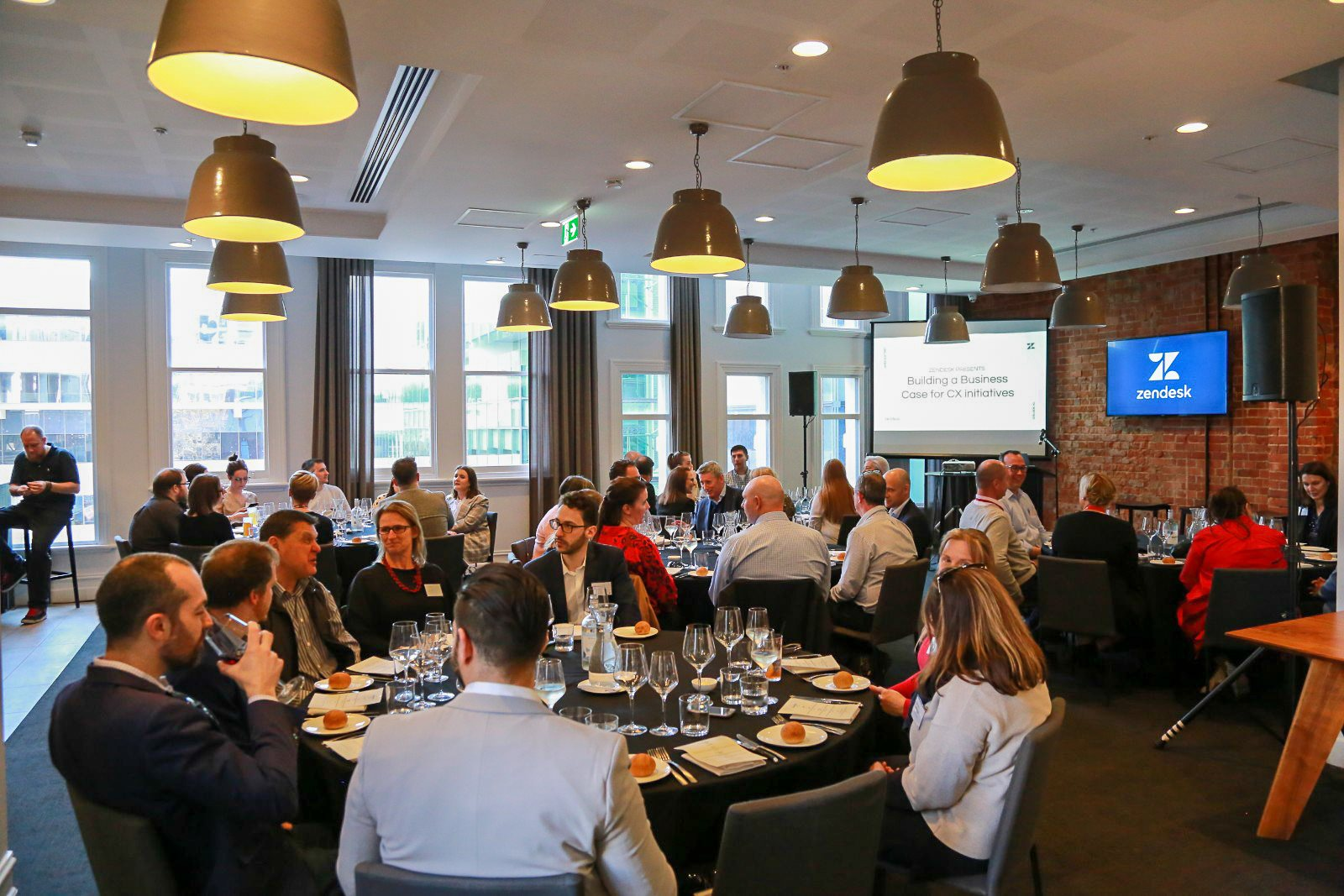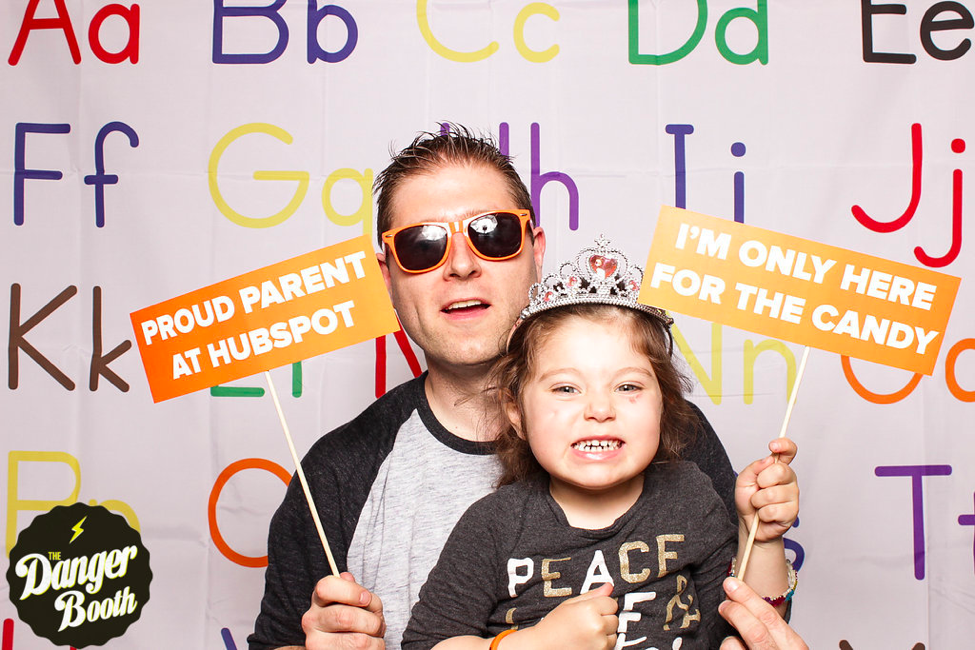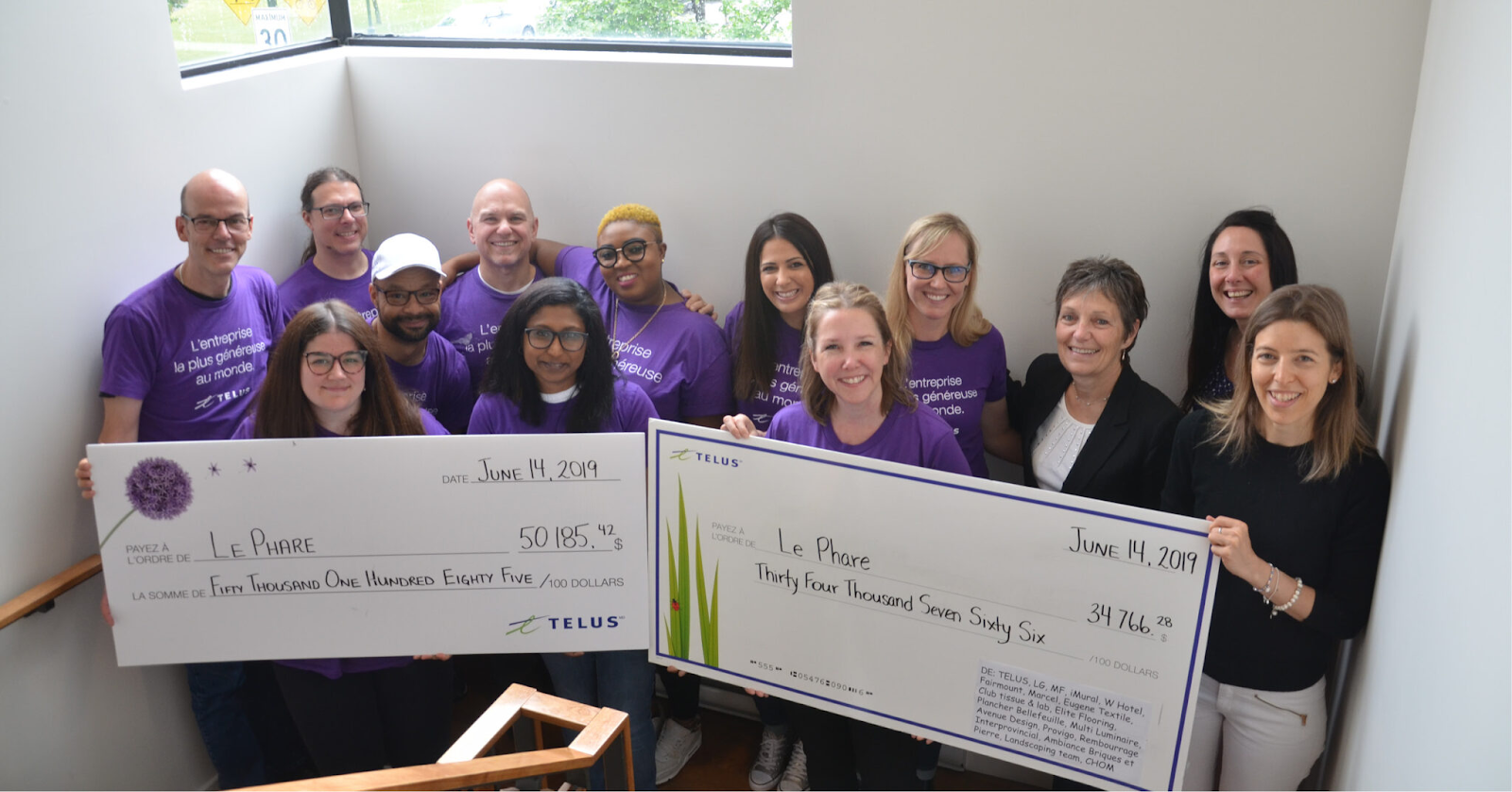Sur cette page
Les employés ne travaillent pas uniquement pour leur salaire. Si vous voulez qu'ils restent, il faut qu'ils se sentent connectés et qu'ils aient un sentiment d'appartenance au lieu de travail. C'est pourquoi l'engagement sur le lieu de travail est si important.
Vous pouvez encourager l'engagement sur le lieu de travail par la mise en réseau des employés. Les réseaux d'employés donnent au personnel la possibilité de se connecter et de partager des idées, des connaissances et des opportunités de carrière.
Résultat : vous obtenez des employés qui deviennent les meilleures versions d'eux-mêmes. Comme vous avez plus d'employés de ce calibre capables d'influencer les autres, vous améliorez également votre culture organisationnelle.
Voici donc six idées de mise en réseau des employés que vous pouvez mettre en œuvre sur votre lieu de travail :
1. Déjeuner et sessions d'apprentissage
Les déjeuners-conférences ne sont pas seulement des rencontres sociales. Elles permettent également aux employés d'apprendre différentes choses. Vous pouvez laisser vos employés parler entre eux. Vous pouvez également inviter un expert interne ou une personne extérieure.
Les sessions ne doivent pas nécessairement être des sessions de coaching régulières. Il peut s'agir simplement de déjeuners au cours desquels les employés discutent et ont des conversations intéressantes. Vous pouvez réunir tout le monde dans un café décontracté. Une autre option consiste à trouver un lieu agréable, comme l'a fait Zendesk ci-dessous :

Grâce à cette configuration, vos employés peuvent apprendre tout ce qu'ils veulent.
Ils peuvent acquérir des compétences ou des théories qu'ils peuvent utiliser pour améliorer leurs performances professionnelles. Ainsi, si vous organisez un déjeuner d'apprentissage avec votre service marketing, vous pouvez discuter avec eux des stratégies efficaces de marketing entrant. Vous pouvez également inviter un expert à parler du référencement et du marketing des médias sociaux.
Les membres du personnel peuvent également être informés des possibilités qui leur permettent de clarifier leur parcours professionnel. Par exemple, il peut apprendre d'un collègue que votre entreprise offre des possibilités d'apprentissage à ses employés à l'étranger.
Cependant, l'organisation d'un déjeuner-causerie ne se limite pas à servir de la nourriture et à inviter des gens.
Suivez ces conseils pour garantir la réussite de l'événement:
- Couvrez des sujets rapides et légers en une seule session. Vous ne voudriez pas siphonner l'énergie des participants.
- Offrez de la nourriture (bien sûr). Un déjeuner gratuit incitera vos employés à participer.
- Trouvez un orateur fiable (ou un modérateur si vos employés se contentent d'interagir entre eux). Le volet "Apprendre" est tout aussi important que le volet "Déjeuner".
- Planifiez la session et annoncez-la. Tenez compte de la disponibilité de votre conférencier (s'il y en a un) lorsque vous choisissez un horaire. Annoncez le déroulement de la session plusieurs semaines à l'avance.
- Recueillez les réactions à l'événement. Vos employés ont-ils apprécié l'événement ? Ont-ils appris quelque chose ?
Les déjeuners-conférences sont d'excellents événements de mise en réseau des employés. Elles constituent un outil puissant pour nouer et entretenir des relations professionnelles. En outre, ils peuvent aider les employés dans leur développement professionnel.
Tirez le meilleur parti de ces sessions en encourageant vos employés à distribuer des cartes de visite numériques pendant les événements. Votre service des ressources humaines peut créer ces cartes et les remettre à chaque nouvel employé. N'oubliez pas de consulter les avis sur les meilleures cartes de visite numériques afin de déterminer la solution la mieux adaptée à votre entreprise.
2. Activités de renforcement de l'esprit d'équipe
Les activités de renforcement de l'esprit d'équipe sont des exercices amusants qui peuvent être réalisés sur place ou en plein air. Parce qu'elles obligent vos employés à se mesurer les uns aux autres, elles font ressortir le meilleur de votre personnel.
Ils permettent également de rompre la monotonie d'une journée de travail en incitant vos employés à faire quelque chose de physiquement ou mentalement stimulant.
Voici quelques exemples d'exercices de consolidation d'équipe :
- Tout type de sport
- Casse-tête
- Hackathons. Les hackathons sont des événements au cours desquels les employés formulent leurs propres solutions aux problèmes de l'entreprise.
Le renforcement de l'esprit d'équipe ne consiste pas tant à enseigner quelque chose de nouveau à votre personnel, comme c'est le cas lors des déjeuners-conférences ou des programmes de mentorat (nous y reviendrons plus tard).
L'objectif premier du team building est d'amener les employés à se rencontrer et à faire connaissance.
3. Accueillir d'autres événements sociaux
Vous pouvez également organiser d'autres événements sociaux pour créer un réseau d'employés. Ces activités d'engagement des employés n'impliquent pas nécessairement que les employés travaillent ensemble à la réalisation d'un objectif (comme dans le cas des activités de renforcement de l'esprit d'équipe).
Voici quelques exemples d'événements sociaux amusants :
- Fêtes d'anniversaire des employés
- Fêtes de Noël
- Soirée annuelle de remise des prix : inclure des catégories amusantes telles que "l'employé le mieux habillé", "le clown du bureau", etc.
Vous pouvez également vous inspirer d'événements commémorés dans le monde entier pour vos autres événements de mise en réseau interne. Par exemple, la journée annuelle "Bring Your Kid to Work" de Hubspot peut s'inspirer de la fête des pères :

Toutefois, en tant qu'employeur, vous devez accorder de l'importance à l'équilibre entre vie professionnelle et vie privée. Même si ces événements sociaux sont l'occasion de se détendre, ils doivent être considérés comme du "travail". Par conséquent, organisez-les pendant les heures de travail, et non après 18 heures, lorsque les employés devraient être avec leur famille.
Si vous êtes trop occupé pour organiser ces activités, vous pouvez demander à des employés de confiance ou à des chefs de projet extérieurs à l'entreprise de faire le travail à votre place.
4. Mettre en place des programmes de mentorat
Les programmes de mentorat ne se contentent pas d'établir et d'entretenir des relations solides entre les mentors et les mentorés. Ils aident également les nouveaux employés à acquérir les compétences dont ils ont besoin pour mieux remplir leurs fonctions.
Lorsque vous disposez d'une équipe plus talentueuse, vous pouvez atteindre vos objectifs commerciaux plus rapidement. Il n'est donc pas surprenant que 92 % des grandes organisations - en particulier les entreprises du classement Fortune 500 - disposent de programmes de mentorat.
Il n'est pas très difficile de mettre en place un programme de mentorat. Il suffit de suivre les conseils ci-dessous :
- Identifiez les lacunes en matière de formation. Même si votre objectif est la mise en réseau des employés, vous souhaitez tirer le meilleur parti de votre programme de mentorat. Cela signifie que vous voulez que vos mentorés apprennent aussi quelque chose de nouveau.
- Vérifiez les lacunes de vos employés actuels. Par exemple, votre équipe de vente atteint-elle ses objectifs de vente ? Si ce n'est pas le cas, il s'agit d'une lacune en matière de formation que vous devez combler.
- Choisissez un mentor. Le meilleur mentor est une personne de votre organisation qui connaît la culture et les processus de l'entreprise.
- Précisez les objectifs du mentorat : Précisez les objectifs de votre mentorat dès le départ. Vous pouvez créer un plan de cours basé sur ces objectifs ou demander au mentor que vous avez choisi d'élaborer un plan de cours que vous devez approuver.
Demandez à votre mentor de renforcer les points à retenir après chaque leçon. Cela peut être aussi simple que d'envoyer des courriels contenant les résumés des leçons aux mentorés. Vos mentors peuvent utiliser un outil de recherche d'adresses électroniques ou LinkedIn scraper si les RH ne disposent pas de l'adresse électronique d'un mentoré.
5. Organiser des sessions de partage des connaissances
Vous pouvez choisir d'organiser des sessions de partage des connaissances plutôt que des programmes de mentorat. Contrairement aux programmes de mentorat, les sessions de partage des connaissances n'ont pas de conférencier spécifique. Le processus de partage des connaissances est bidirectionnel. Ainsi, le "mentor" peut être le "mentoré" à un moment donné, et à un autre moment, les rôles peuvent être inversés.
Le processus de mise en réseau des employés est d'autant plus efficace que les employés qui participent à ces sessions sont des "coéquipiers" (là encore, il n'y a pas de relation mentor-mentoré). Après tout, les employés peuvent parler de tout et n'auront pas peur de partager ce qui les préoccupe.
Il s'ensuit que le processus d'apprentissage est également plus efficace.
Les sessions de partage des connaissances peuvent techniquement avoir lieu à tout moment de la journée (les gens aiment parler), mais cela ne signifie pas que vous n'avez pas un rôle à jouer. En tant qu'employeur, vous devez les encourager. Commencez par réserver du temps chaque semaine pour que les employés partagent quelque chose avec le groupe. Faites-le assez souvent et vos employés n'auront plus besoin d'être encouragés. Ils partageront leurs idées avec leurs collègues à tout moment de la journée.
Vous pouvez également créer des espaces sûrs qui encouragent le partage des connaissances. Par exemple, supprimez les cabines dans l'espace de travail. Ceux-ci ne servent pas seulement de barrières physiques entre les employés. Ils peuvent également avoir un effet sur leur volonté de parler à leurs collègues.
6. Activités bénévoles
Les programmes de bénévolat ne se contentent pas d'entretenir les liens entre les employés. Ils permettent également aux employés de contribuer à une cause qui les passionne. En outre, les programmes de bénévolat peuvent contribuer au recrutement.
Environ 81 % des milléniaux attendent des entreprises qu'elles jouent un rôle dans leur communauté. Si vous ne disposez pas d'un bon programme de responsabilité sociale d'entreprise, vous pouvez dire adieu au recrutement des meilleurs talents.

Mais comment mettre en place un programme de bénévolat pour les employés ?
Tout d'abord, vous devez vous rappeler qu'il ne suffit pas de choisir une cause et de prétendre s'y consacrer. Vos employés, vos candidats, vos clients et vos clients potentiels ne verront que vous. Vous devez choisir une cause à laquelle vous croyez vraiment.
Il faut donc commencer par évaluer les problèmes de votre communauté. Vérifiez ensuite les objectifs de votre entreprise. Écartez les causes potentielles que vous avez identifiées et qui vont à l'encontre de vos objectifs commerciaux. Par exemple, si vous vendez des hamburgers, il est hors de question de sensibiliser la communauté aux avantages de l'alimentation végétalienne.
En tant qu'entreprise, la meilleure cause à soutenir est celle qui correspond à vos objectifs commerciaux. Par exemple, si vous vendez du dentifrice ou des brosses à dents, l'accès universel aux soins dentaires est une excellente cause à soutenir. Vous pouvez donc organiser chaque mois des examens dentaires gratuits dans la communauté.
Une fois que vous avez déterminé votre cause (et votre événement RSE), vous pouvez l'annoncer sur le lieu de travail. Expliquez aux employés les avantages du bénévolat au lieu de les forcer à y participer. L'objectif est de rassembler des personnes partageant les mêmes idées et pouvant interagir les unes avec les autres.
En tant que bénévoles qui se sentent concernés, ils ne se contenteront pas d'aider la communauté à faire face à des problèmes urgents. En tant que collègues partageant la même passion, ils s'aideront mutuellement à se développer en tant que professionnels et individus.
En conclusion
L'engagement des salariés est la clé de la réussite d'une entreprise. Il peut vous aider à conserver vos meilleurs employés. Dans le même temps, il peut contribuer à stimuler la culture organisationnelle.
En tant qu'entreprise, vous pouvez favoriser l'engagement des salariés en encourageant leur mise en réseau. Vous avez appris six idées de mise en réseau des employés que vous pouvez mettre en œuvre.
Organisez des déjeuners-conférences, des activités de renforcement de l'esprit d'équipe et d'autres événements sociaux. N'oubliez pas d'organiser des programmes de mentorat, des séances de partage des connaissances et des activités de bénévolat.
Il n'est pas nécessaire de les tenir tous en même temps. Essayez l'un ou l'autre et observez les résultats. Choisissez ensuite ceux qui vous donnent les meilleurs résultats.
En résumé, favorisez les relations interpersonnelles sur le lieu de travail et vous obtiendrez les meilleurs résultats.


